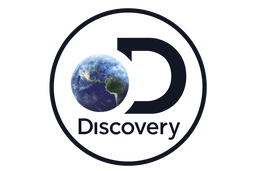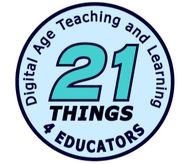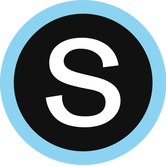Part 3
In part three I talk about what's freely available and supports best practice to answer the question “How do we get there?"
How do we get there?
Districts need new approaches to professional learning to meet the changing needs of educators. Traditional delivery methods designed for everyone meet the needs of no one. Instructional technology consultants specialize in meaningful technology integration. A partnership between local districts and IT consultants brings years of expertise in leveraging flexible technologies and instructional design principles to the planning table to design professional learning experiences that support educator agency.
District leaders should begin with the end in mind. What is the district’s vision for technology use? The vision depicts the ideal. What does effective technology integration look and sound like? Collaborating with key stakeholders to develop a vision statement is a critical first step in successful technology programs (Guru, 2018). Key stakeholders will find the ISTE Standards particularly helpful when crafting a vision statement as they provide a model for what the standard looks like in practice.
With the vision in mind, leverage available resources to bring the vision to fruition (Guru, 2018). Working with the instructional technology department ensures year long plans for professional learning align with best practice and the district's vision for technology at no cost to the district.
Developing a list of self-paced modules within the county adopted learning management system Schoology together creates a flexible pathway for educators to draft year long plans that meet their needs as individuals while aligning with best practice and the districts overarching vision for technology.
The ISTE Standards provide a roadmap for planning and development of the self-paced modules. Educators look to the Educator standards to set professional learning goals. Modules help the educator define a key area of educational technology, make connections between best practice and teaching and learning, and finally apply new learning in their setting. Using the student standards, educators have a clear picture of what students will be doing when technology integration is effective. Both the student and educator standards help monitor progress and determine the direction of future learning.
While the standards show educators what effective technology integration will look like, best practice models for technology integration show educators a pathway to get to the standards. Leveraging video and content from rigorously vetted online resources, modules can provide educators with models of effective technology integration. Educators will benefit from controlling the time and pace of their learning as well as opportunities to engage in subject area focused discussion with colleagues and coaches (Addy, 2017).
District leaders should begin with the end in mind. What is the district’s vision for technology use? The vision depicts the ideal. What does effective technology integration look and sound like? Collaborating with key stakeholders to develop a vision statement is a critical first step in successful technology programs (Guru, 2018). Key stakeholders will find the ISTE Standards particularly helpful when crafting a vision statement as they provide a model for what the standard looks like in practice.
With the vision in mind, leverage available resources to bring the vision to fruition (Guru, 2018). Working with the instructional technology department ensures year long plans for professional learning align with best practice and the district's vision for technology at no cost to the district.
Developing a list of self-paced modules within the county adopted learning management system Schoology together creates a flexible pathway for educators to draft year long plans that meet their needs as individuals while aligning with best practice and the districts overarching vision for technology.
The ISTE Standards provide a roadmap for planning and development of the self-paced modules. Educators look to the Educator standards to set professional learning goals. Modules help the educator define a key area of educational technology, make connections between best practice and teaching and learning, and finally apply new learning in their setting. Using the student standards, educators have a clear picture of what students will be doing when technology integration is effective. Both the student and educator standards help monitor progress and determine the direction of future learning.
While the standards show educators what effective technology integration will look like, best practice models for technology integration show educators a pathway to get to the standards. Leveraging video and content from rigorously vetted online resources, modules can provide educators with models of effective technology integration. Educators will benefit from controlling the time and pace of their learning as well as opportunities to engage in subject area focused discussion with colleagues and coaches (Addy, 2017).
|
|
Collaboration Across Resources to Leverage Resources
Successful district initiatives will also collaborate across key stakeholders and leverage freely available resources to make the vision we defined in part two a reality in our schools. Several resources have been made freely available for use in the county. In part three I make connections between best practice and these resources to show you how we move from “Teacher Centered” to “Student Empowered Learning.”
21 Things Project
The new 21 Things 4 Educators takes a deeper look at 21 Things in edtech. The open educational resource is aligned to the ISTE Educator Standards and designed for flexible delivery. Estimated time to complete a module ranges from 3-6 hours. Educators produce a digital artifact upon completion of each module. Using the assignment feature in Schoology district leaders can monitor and track progress as educators step through their personalized year-long plans.
Schoology
The Instructional Technology Department consultants rigorously vetted several of the top learning management systems and adopted Schoology Enterprise as the county wide platform for blended learning. While teachers and students may be comfortable with the platforms you are currently using, it’s important to understand the limitations of platforms such as Google Classroom and Empowered Learning and how your needs will change as the culture of learning shifts from Teacher Centered to Student Empowered Learning.
Consider the affordances and limitations of your districts platform of choice and the vision for technology use in the county:
Consider the affordances and limitations of your districts platform of choice and the vision for technology use in the county:
Discovery Education Experience
Your browser does not support viewing this document. Click here to download the document.
Discovery Education Experience
Discovery Education Experience is a collection of digital resources for K-12 schools. Educators can curate vetted digital content, design interactive lessons, and assess learning with Studio. The platform not only provides digital content, but also supports classroom implementation with a library of research-based strategies aligned to the Six Phases of Learning model from McRel. The Six Phases of Learning model pairs the information processing model (Sousa, 2016) with research on teaching and learning. In “Student Learning That Works” (2018).
Goodwin explains the purpose of the model is to help educators develop a better understanding of how the brain processes information. Increased knowledge of how the brain processes information would in turn inform lesson design and lead to deeper learning. Implementing the Six Phases of Learning model with Discovery Education Experience’s SOS teaching strategies provides a promising solution to learning loss during Covid-19.
Goodwin explains the purpose of the model is to help educators develop a better understanding of how the brain processes information. Increased knowledge of how the brain processes information would in turn inform lesson design and lead to deeper learning. Implementing the Six Phases of Learning model with Discovery Education Experience’s SOS teaching strategies provides a promising solution to learning loss during Covid-19.
Six Phases of Learning
Discovery Education Experience is a collection of digital resources for K-12 schools. Educators can curate vetted digital content, design interactive lessons, and assess learning with Studio. The platform not only provides digital content, but also supports classroom implementation with a library of research-based strategies aligned to McRel's Six Phases of Learning model. In Student Learning That Works (2018) Goodwin explains the purpose of the six phases of learning model is to help educators develop a better understanding of how the brain processes information to design lessons that engage students in deeper learning. Goodwin makes the distinction between a model and framework noting a learning model describes the learning process from beginning to end. Goodwin describes the Six Phases of Learning Model as a "synthesis of the science of learning into a model you can follow and apply right away in your classroom" (By exploiting the six phases of learning educators can design better lessons that stay with students longer. The SOS strategies included in the Discovery Education Experience platform are aligned to the Six Phases of Learning model from McRel.
Engage, Enhance, and Extend Learning
The Triple E Framework developed by Liz Kolb at the University of Michigan supports purposeful technology integration in k-12 classrooms. With three components, research-based instructional strategies lay the foundation of the framework while technology becomes secondary when the affordances engage, enhance, or extend learning. The Triple E framework also can serve as a guide for educators new to Discovery Education Experience. A critical success factor in the quest to optimize all digital content to accelerate learning hinges on careful consideration of each component. Kolb emphasizes the first component, Engagement, is about time on task. The tool should not district or impede learning. The tool should hook students and provide motivation to begin the learning process. Finally, the tool should move students from passive to active learners as they engage in co-creation or co-engagement.
Figure two displays instructional strategies educators can use to engage, enhance, and extend learning through purposeful selection of DE resources.
Figure two displays instructional strategies educators can use to engage, enhance, and extend learning through purposeful selection of DE resources.
Figure 2 - Triple E Instructional Moves
|
Engagement
Guided practice Modeling thinking Modeling navigation of the tool Software tour I do, we do, you do Teacher monitoring Student self-reflective monitoring Co-use or co-engagement Purposeful partnering Gradual release of learning Create a mentor text Share-aloud Turn and talk Switcheroo Eliciting Prior Knowledge |
Enhancement
Active listening Switcheroo Self reflective practices Visible thinking routines Graphic organizers Visual representations of learning Reflective notebooks Anticipation guides Questioning practices Predicting Differentiation Personalization Share-aloud Turn and Teach |
Extension
Real world issues Partner with real world organizations Connect with authentic experts Engage students in authentic discourse with others Pen Pals Students investigate and direct their own project Role playing Use authentic tools that are prominent in everyday life |
Triple E Framework by http://tripleeframework.weebly.com is licensed under a Creative Commons Attribution-NonCommercial 4.0 International License.
The second component, Enhancement, evaluates to what extent the affordances of the tool enhance the learning experience. Does the tool move students to think deeply about the content of the lesson? Does the tool support inclusive lesson design providing functions and features students can use to access learning? Tools that enhance learning should also support personalization allowing students to take different pathways to achieve the same common goal. The final component, Extension, asks educators to consider if the technology extends learning beyond the classroom. When technology extends the learning goals the technology enables students to work in meaningful ways outside of the classroom authentically.
Learning Tools from Microsoft is a suite of tools available in office 365 applications such as Word, OneNote, Office Lens, and Edge Browser. DE users can anticipate learner variability throughout the design process by leveraging the Reader feature. The digital tool was designed using research-based strategies to support reading and writing skills. Figure one displays key features educators can leverage to design for learner variability from within the DE platform (Microsoft, 2021).
Learning Tools from Microsoft is a suite of tools available in office 365 applications such as Word, OneNote, Office Lens, and Edge Browser. DE users can anticipate learner variability throughout the design process by leveraging the Reader feature. The digital tool was designed using research-based strategies to support reading and writing skills. Figure one displays key features educators can leverage to design for learner variability from within the DE platform (Microsoft, 2021).
Benefits of Learning Tools from Microsoft
| Feature | Proven Benefit |
|---|---|
| Enhanced dictation | Improves authoring text |
| Focus mode | Sustains attention and improves reading speed |
| Immersive reading | Improves comprehension and sustains attention |
| Font spacing and short lines | Improve reading speed by addressing "visual crowding" |
| Parts of speech | Supports instruction and improves writing quality |
| Syllabification | Improves word recognition |
| Comprehension mode | Improves comprehension by an average of 10% |
In “Leveling the Playing Field with Microsoft Learning Tools,” Katherine McKnight shares key findings from an independent, nonprofit research institute study designed to evaluate if the use of Microsoft Learning Tools enhances reading and writing instruction and learning (2019). RTI International interviewed and analyzed assessment data from four 4th grade and four 6th—12th grade teachers in Bellevue, Washington to determine if and to what extent the tool supports learning. STAR scores and percentiles were used to compare fourth grade student performance in reading comprehension. Fourth grade students in the study showed an average gain of 123.6 points. The average gain of the historical group, 89.2 points, was significantly lower. Teacher interviews revealed struggling students benefited from having the ability to manipulate the appearance of text and control pacing of the voice. Other features such as highlighted words and parts of speech improved reading mechanics. Using the Immersive Reader and Dictation tools, struggling readers overcame reading and writing barriers and interacted with classroom materials at higher levels in other content areas. The study concluded the use of Learning Tools enabled teachers to transform learning in new and meaningful ways that could not have been achieved without the digital tools.
Authentic Assessments
Authentic AssessmentsAn authentic task assesses a student’s ability to apply knowledge and skills to real-world scenarios (Mueller, 2018). Several characteristics make a task authentic.
Authentic tasks--
Authentic tasks fall into one of the following categories:
There are many features in Discovery Education Experience that support teacher implementation of authentic assessment across modalities. Specifically, several of DE’s SOS instructional strategies create opportunities to engage students in authentic tasks (e.g., Paper Slide, Music Video, and PechaKucha). In addition to the library of digital content supporting authentic assessment, DE’s Studio editor empowers students to creatively communicate learning through videos, images, illustrations, and original text. Such tools and resources support educators making the shift from a teacher driven to student driven learning in a digital environment.
Authentic tasks--
- require students to construct a response,
- mirror challenges and experiences that take place in the “real world,”
- assess performance tasks,
- shift the focus from teacher-centered to student-centered,
- ask students to analyze, synthesize, and apply learning,
- shifts the role of students from consumer to producer,
- and allow students to demonstrate learning based on their preferences.
Authentic tasks fall into one of the following categories:
- selected response,
- constructed response,
- product,
- and performance.
There are many features in Discovery Education Experience that support teacher implementation of authentic assessment across modalities. Specifically, several of DE’s SOS instructional strategies create opportunities to engage students in authentic tasks (e.g., Paper Slide, Music Video, and PechaKucha). In addition to the library of digital content supporting authentic assessment, DE’s Studio editor empowers students to creatively communicate learning through videos, images, illustrations, and original text. Such tools and resources support educators making the shift from a teacher driven to student driven learning in a digital environment.
References
- Goodwin, B. (2018). Student learning that works: How brain science informs a student learning model. Denver, CO: McREL International.
- Gura, M. (2018). The edtech advocate's guide to leading change in schools.
- McKnight, K. (2017). Leveling the playing field with Microsoft Learning Tools. Research report retrieved from http://edudownloads.azureedge.net/msdownloads/Learning_Tools_research_study_BSD.pdf
- Microsoft. (n.d.). Learning Tools. Immersive Reader: Microsoft Learning Tools. Retrieved July 3, 2021, from https://www.onenote.com/learningtools#
- Mueller, J. (2018). Authentic Assessment Toolbox. North Central College, Naperville, IL.
- Pitler, H., Hubbell, E., Kuhn, M. & Malenoski, K., 2007, Using technology with classroom instruction that works, ASCD, Alexandria, VA.
- "Research | Discovery Education". Discovery Education, 2021, https://www.discoveryeducation.com/research/
- Tools, Andrew. "Microsoft Learning Tools - Microsoft Garage". Microsoft Garage, 2021, https://www.microsoft.com/en-us/garage/wall-of-fame/learning-tools-onenote-immersive-reader/
- Triple E Framework by http://tripleeframework.weebly.com is licensed under a Creative Commons Attribution-NonCommercial 4.0 International License.




